
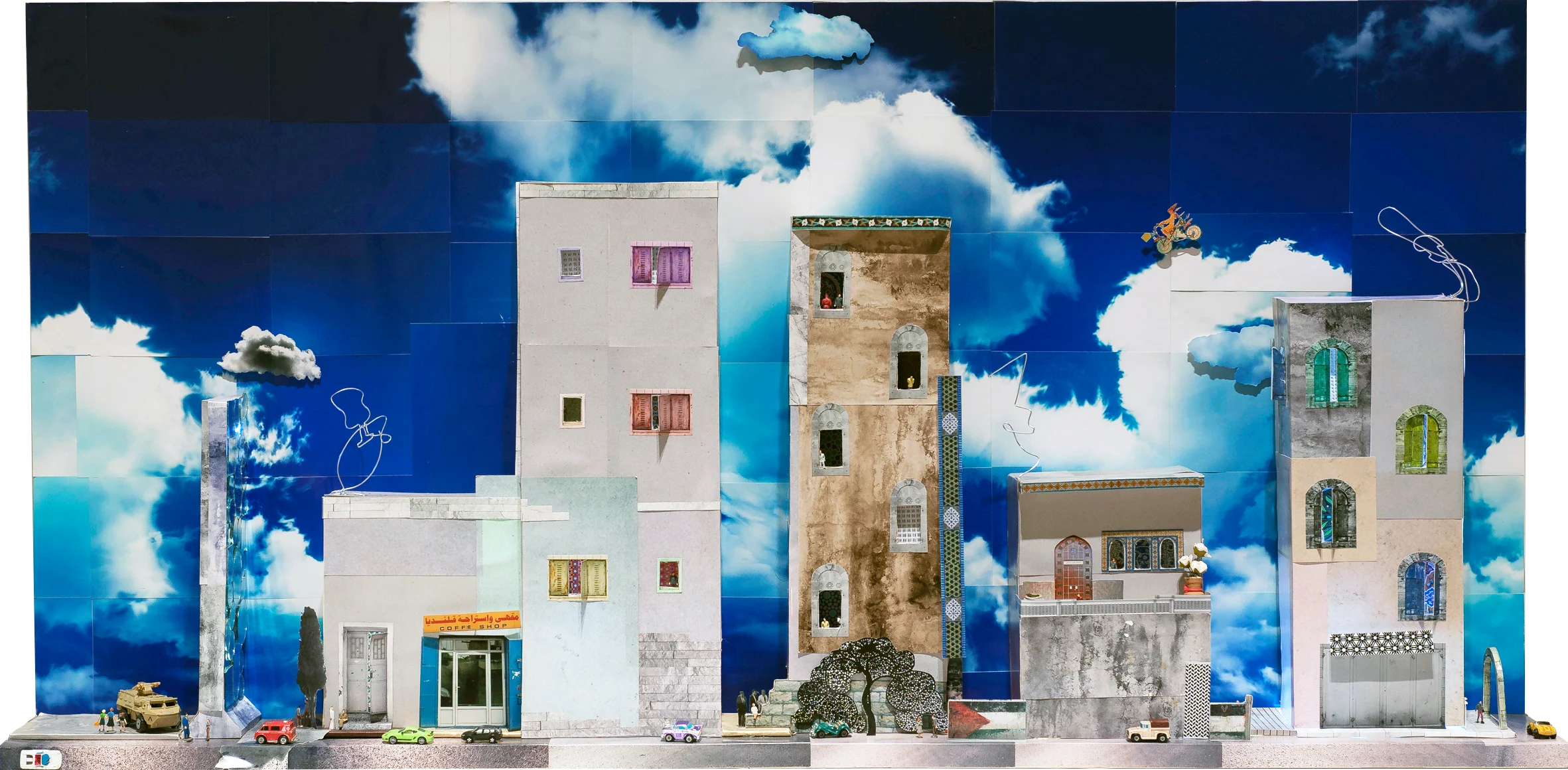
One of 21 siblings growing up in Palestine, Wafa Hourani earned his pocket money by being a backstage wedding photographer. After being shot in the foot on his way to school as a teenager, he lost and then found himself in words and has since devoted his life to art. The title of “polymath” doesn’t do him justice. His best known works are a series of scale models depicting life inside the notorious Qalandia refugee camp for future residents. Phoebe West speaks to Wafa about the politics and outlook that fuels his wildly creative life.
Wafa Hourani is the definition of a polymath. He’s recorded music, written scripts and whole books of poetry; painted, photographed and created sculptures, miniature and vast. Right now he is focusing on carving the Tree of Life (“the oldest tree in the world”) from marble. He has 20 older siblings.

Growing up he dreamt of making a feature film. As a young man he went to Tunisia to study experimental cinema and set about making one with the help of his brother and nephew. Both artists in their own right, Hassan and Samer were the stars of the film, but as they were going to shoot the last scene everything fell apart and they drowned in the sea of Jaffa. Their sudden and total absence severed Wafa’s connection with cinema. “I did the movie, I edited the movie, but I made it disappear also,” he says. “That was maybe the end of my first life.”
Although he wouldn’t continue to make art again until some time after their deaths, it was his first life that forged his love and understanding of creativity. In 1994, when he was 15, Wafa was shot in the foot by an Isreali soldier while he was walking back from school and spent months in hospital undergoing surgeries, unable to walk. Until then, he and his family were sure he was destined for a career in science, but a year spent reading poetry and fiction as a result from being in and out of hospital changed his perspective. Words became vehicles to transport him outside of that room. In the face of trauma or incapacitation, it is his belief that fiction and art become tools for survival.

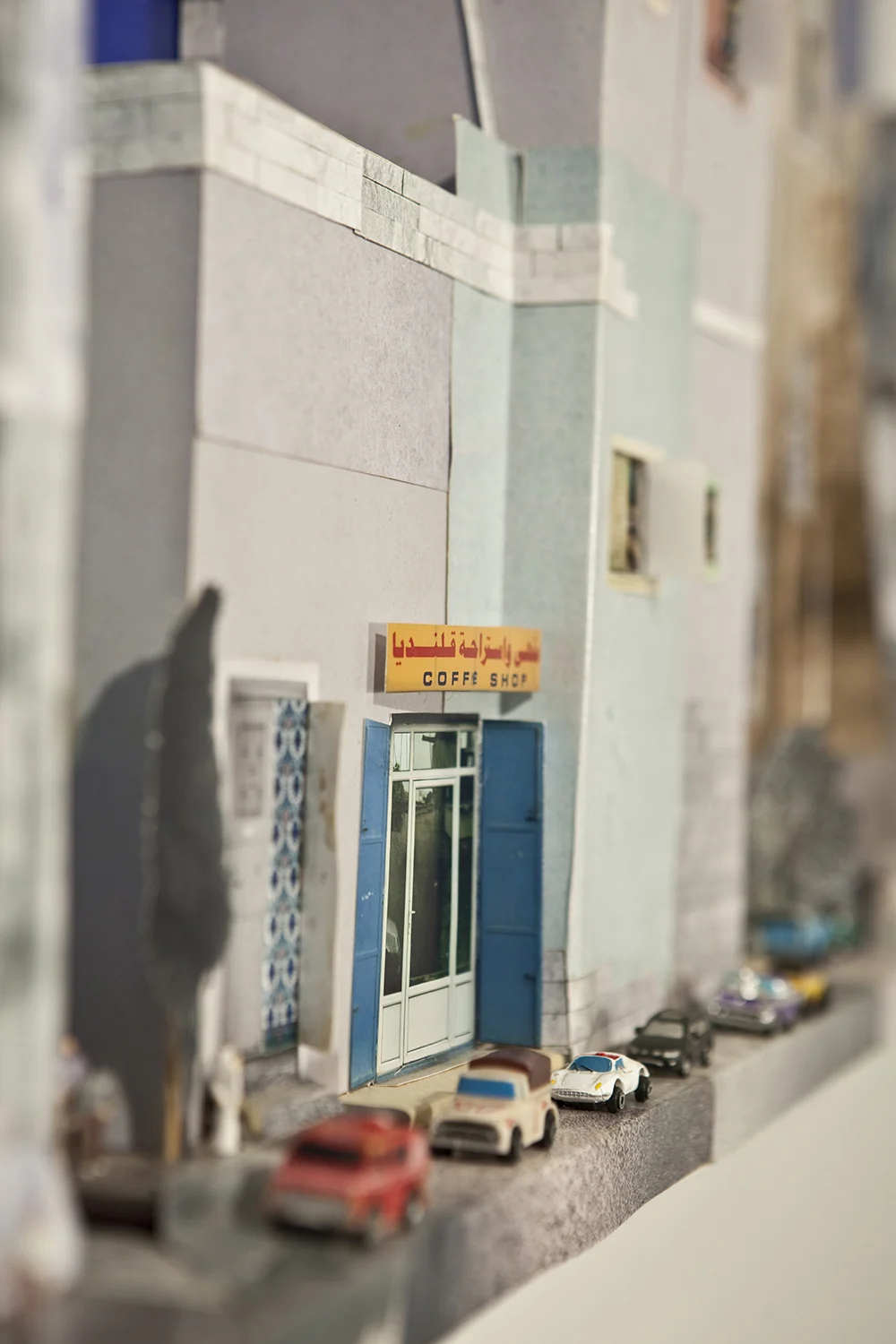
Though trauma and loss feature in Wafa’s route to artistry, they don’t define him. He’s passionate and serious, but warm and quick to laugh. Conversations with him veer off down paths of science and logic, politics and repression, histories and futures, horror and joy. His words make space for endless complexity as well as humor and fun, with each tangent guaranteed to unearth some other treasure – almost as if an afterthought – revealing an insatiable appetite for creativity in all its forms.
Hearing about Wafa’s early life, it is no stretch to see how he came to be an artist, though he describes the route as an accidental one. Born in Hebron, south Palestine, in May 1979, he remembers a house full of noise and books. “My father was a great singer and my mother was always laughing,” he says, grinning. Wafa’s mother was a maker of traditional Palestinian dresses and he credits her with planting seeds of imagination within him. “She has such a natural and spontaneous sense of art, in her way of telling a story and her embroidery,” he says. Some of his older brothers are artists too. “I was surrounded, since I was very young,” he says, “with colorful silks and threads, and big beautiful ideas!” His parents became refugees in 1948 with the division of Palestine, and when he arrived, he became one too, “born and raised a refugee in my own homeland.”
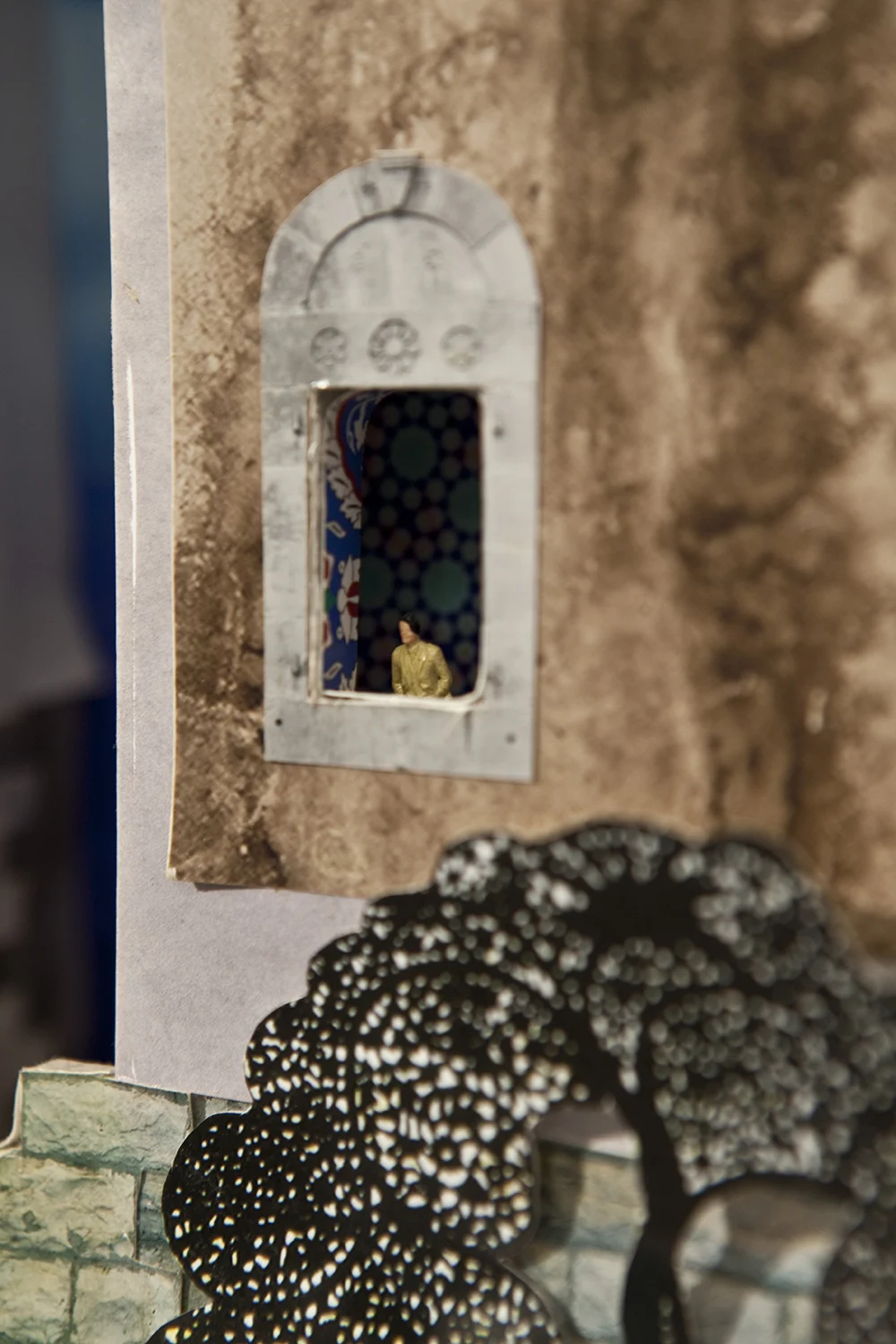
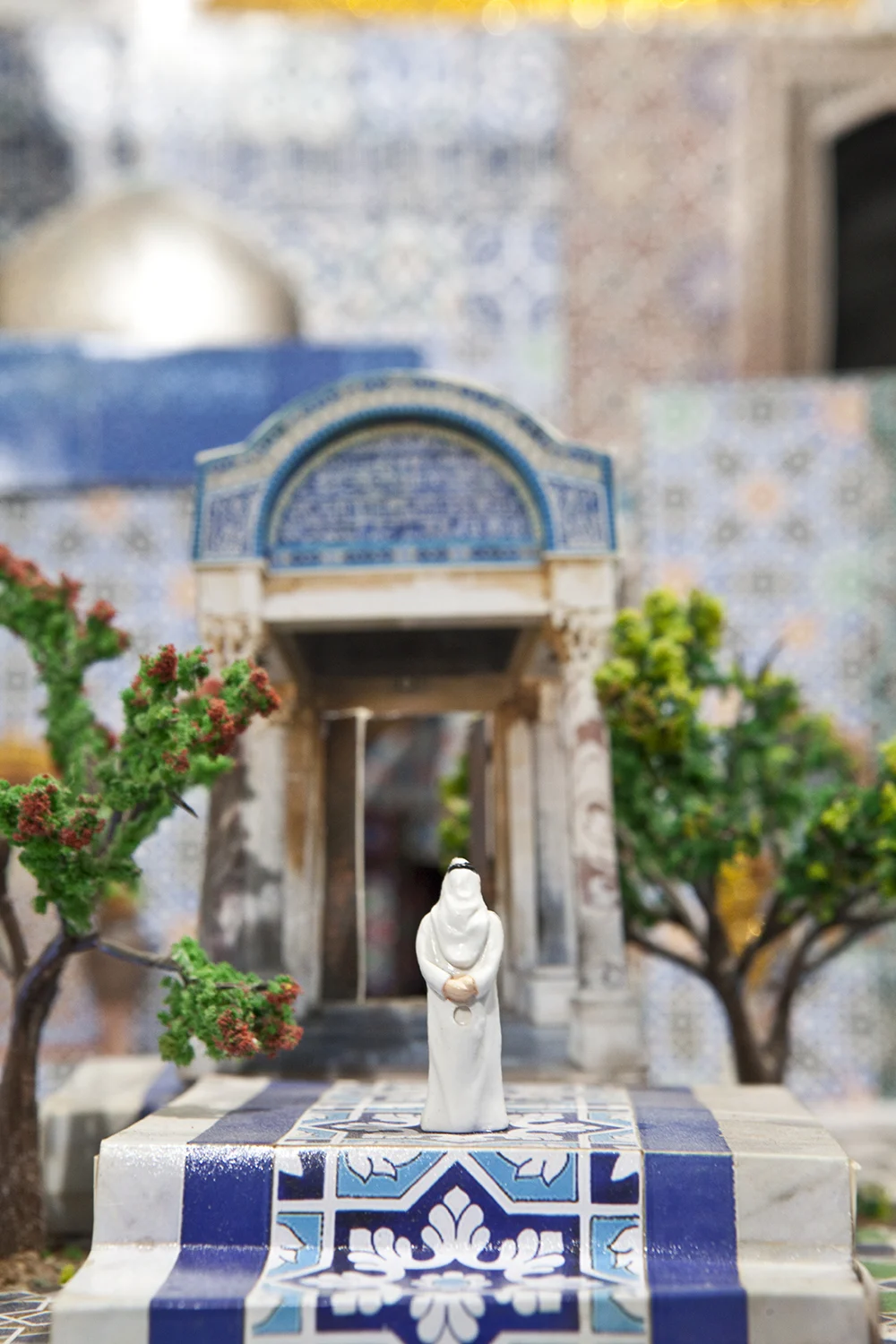
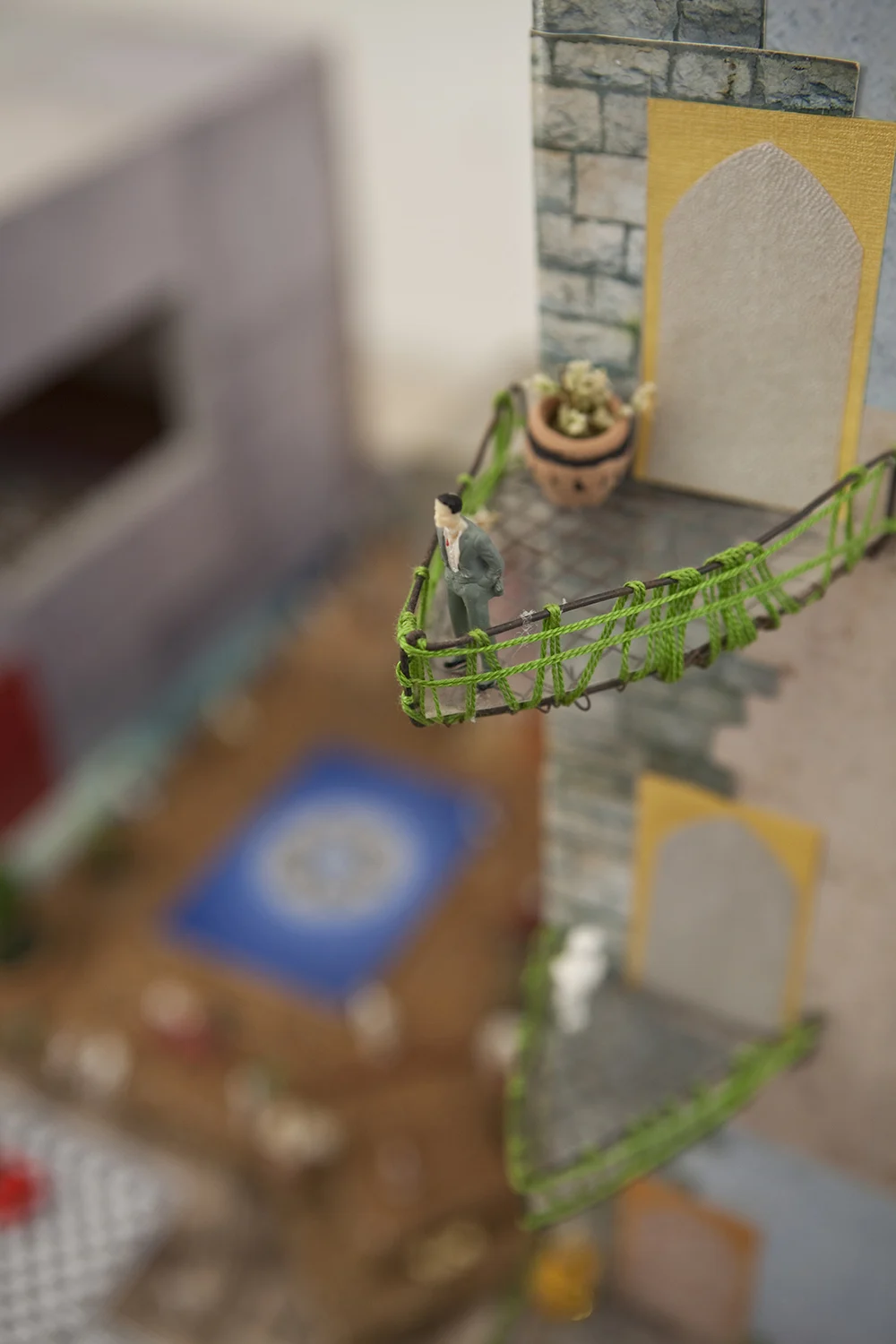

Today Wafa’s work spans continents and mediums, but it all started with photography. At just 13 and with access to cameras lying around the house, Wafa found work taking pictures of women on their wedding day. It was then custom in Hebron for men and women to be separate during weddings, with men forbidden from entering the space of the bride. Being so young, this did not apply to Wafa who was given free rein to photograph brides and their families. “I was just a kid!” he says laughing, knowing that his vocation was launched for a simple desire for pocket money.
He was good at it though. He eventually won a scholarship with Kodak Company where he learned the art of printing. It was after that that he went to Tunisia, his passion for fiction and comedy propelling him towards cinema, but when he lost Hassan and Samer, he lost the want to work in film too. In the year following their death, Wafa recorded an album and then made what he refers to as his “first artwork:” Qalandia 2047. Perhaps his most famous work, Qalandia 2047 makes up one third of his Future Cities project; Qalandia 2047 (2006), Qalandia 2067 (2008) and Qalandia 2087 (2009).


“From the very beginning, I felt that one image is not enough to understand the social and political complexity in Palestine” he says, “I wanted to make an atmospheric mixed media installation, in order for the public to experience life there, and tell you what it is really like to be surrounded by military checkpoints and concrete separation walls.” And that’s exactly what he did.
Wafa’s large sculptures span metres across in order to include settlements, an airport and a check point. Each one is comprised of layers of detail in miniature form: toy cars drive on roads lined with illuminated houses full of countless personal lives and experiences, their windows open revealing sounds of home life. People can be found on the streets and in mythical gardens, sitting on tiny plastic chairs and watching the world go by. As the models reach further into the future, the space between real and imaginary grows larger, making room for walls of mirrors and swimming pools for goldfish, bringing ideas of reflection and illusion into Wafa’s historical timeline of Qalandia 1948 – 2087.

For me, saying things about the future is just a polite way to say things about today.
Qalandia 2047 takes its name from the notorious Qalandia military checkpoint between the West Bank and occupied East Jerusalem. There since 1949, the Qalandia refugee camp sits adjacent to the checkpoint, controlling access to Ramallah, and is home to over 10,000 Palestinian refugees. Wafa spent months visiting the camp, learning its pathways and residents, taking pictures and measurements of every balcony and piece of graffiti. Afterwards he would return to his apartment, where he slept on his sofa – the floorspace of his bedroom taken up with the model. And that’s how he worked on it for six months, building the camp out of foam and cardboard first, before adding layers and layers of detail through photography and sculpture.
The dates in the titles mark projections of significant anniversaries in Palestinian history; 2047 is 100 years after the 1948 al Nakba (or “catastrophe), 2067 marks 100 years since the Arab-Israeli Six Day War, and 2087 is the 100th anniversary of the first Infitada. “It is connected to memory, that’s why I chose to make a refugee camp in the future...but the other part of it was also very personal for me, about missing my brother and my nephew.” Look closely at Qalandia 2047 and you will see them, says Wafa, “both of them exist there.”
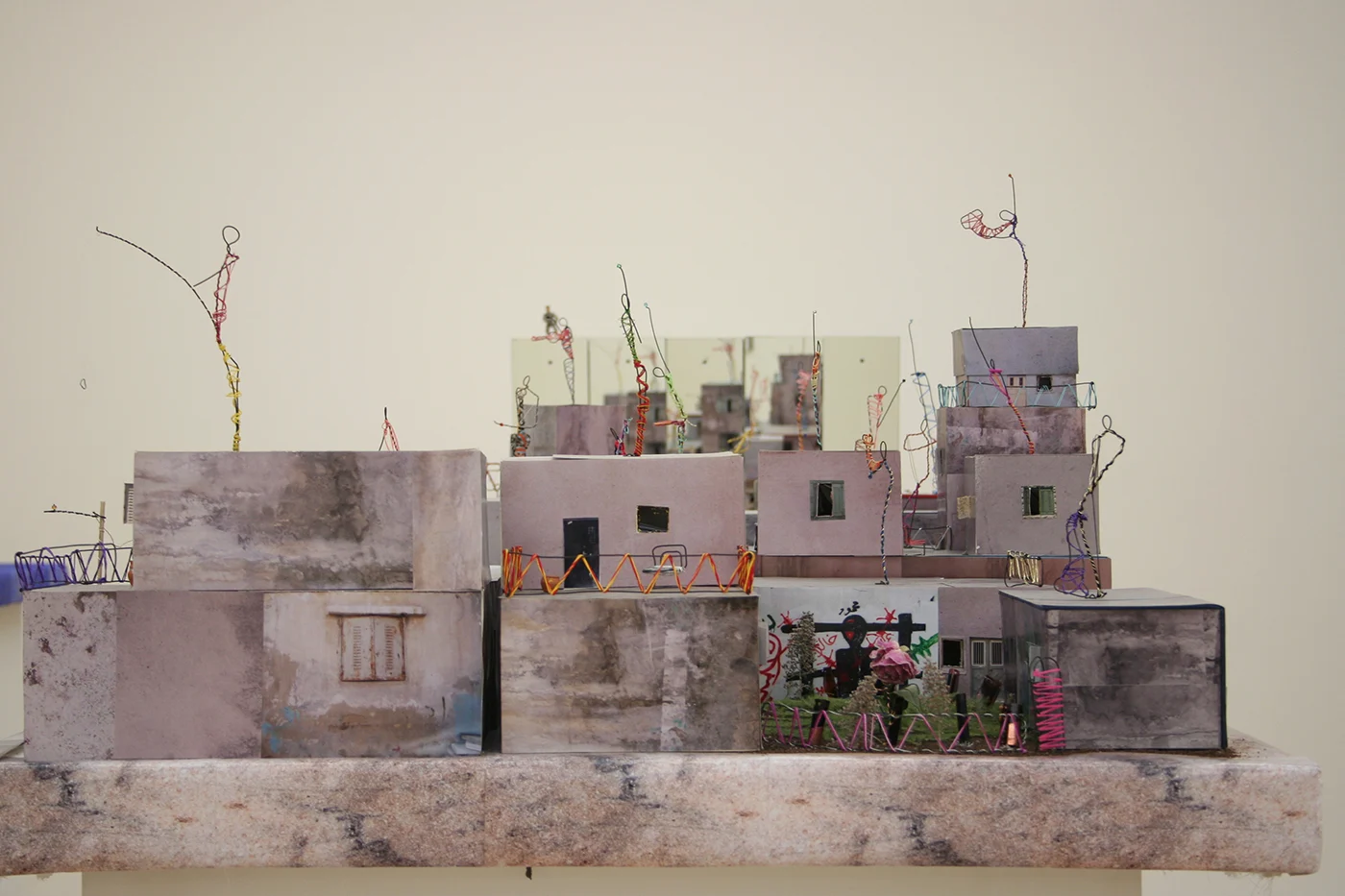
Move closer to the installation and you’ll hear sounds coming from inside the houses: the tiny people within are telling stories, listening to music and watching films. “No one is inside watching the same news,” explains Wafa. Atop every house is an antennae sculpted from metal and fabric, an idea gleaned from his nephew Hassan, and again, no two are the same. Wafa had the residents of the camp design them as an expression against the corruption of media and prescribed political rhetoric. The utopian vision is “about the utopian part inside Palestinians themselves,” he explains, though it is densely layered. There is beauty in the future camps too, imaginary gardens and set ups, “but at the same time it is uncertain, and you can feel that it is not what a future should be.”
The artwork of the children who are living in Qalandia fill some of the windows. Years ago, Wafa started a project called the Palestine Children’s Gallery with the intention of creating an open source of a huge collection of children’s art. Eventually he hopes it will be an app used by anthropologists and psychologists as a way of understanding kids and their aspirations through their painting and expression. “Now I’m collecting work from children across the Arab world – I want to motivate them to make more art!” he says excitedly. So far, the collection stands at more than 25,000 works.

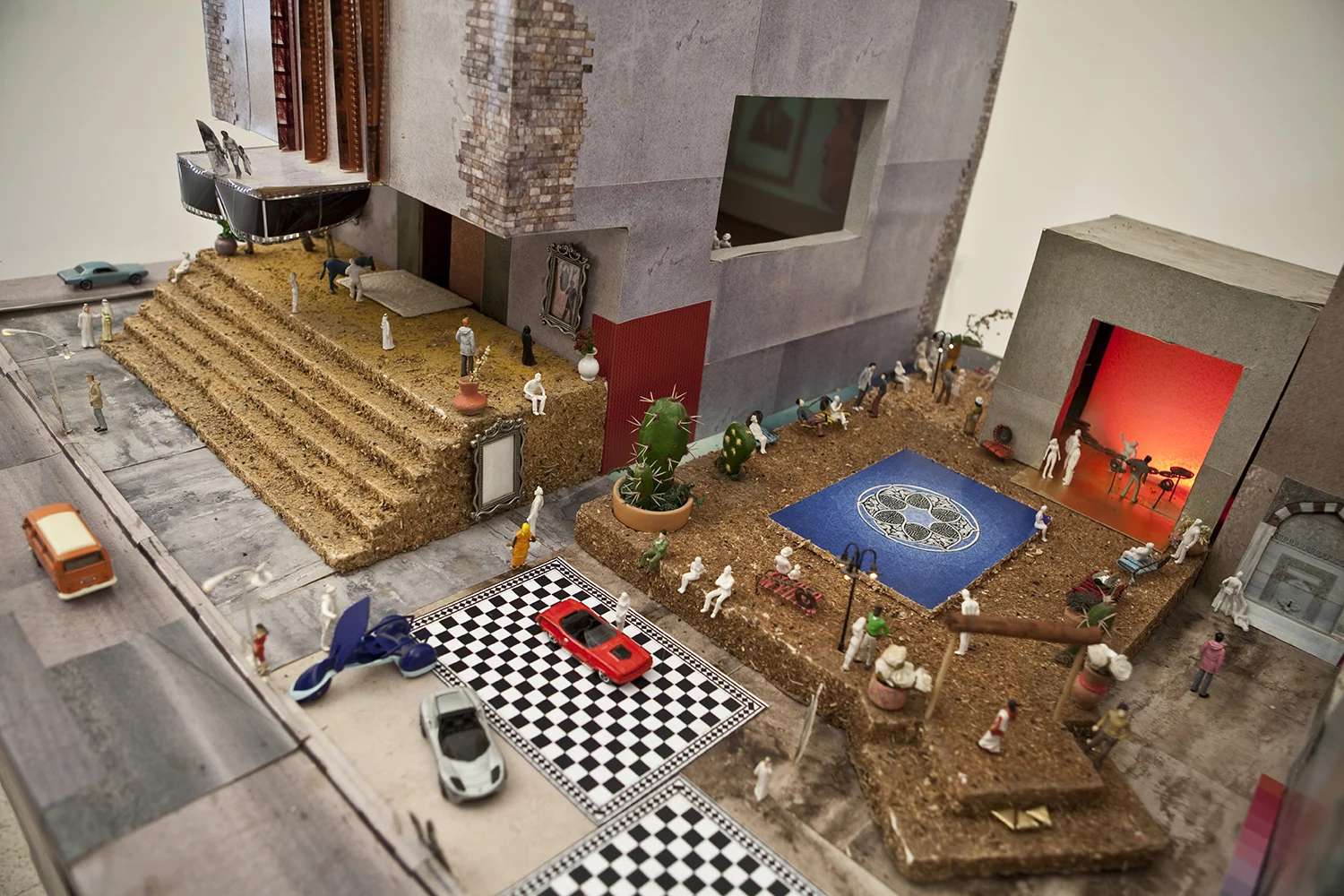
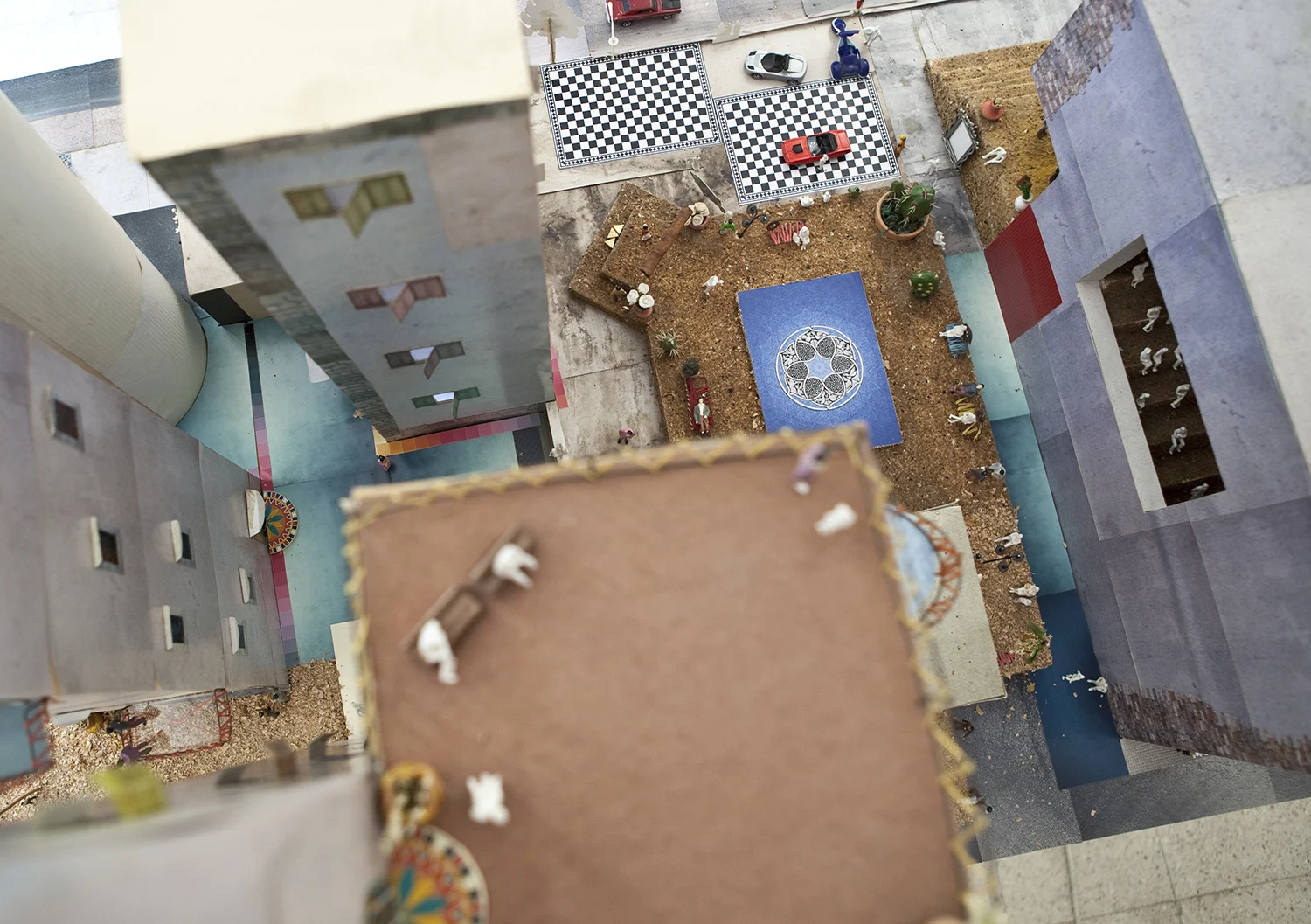
When he finished the piece, Wafa invited the residents of the camp to come and see it at the Ramallah Art Foundation. “It was wonderful,” he says, describing people managing to locate the replicas of their own houses and peering through their tiny windows. It was poignant too, for this novel view of the camp was the first time its residents had seen the whole thing, a perspective which “maybe made them understand their situation even more.” Their situation is one that Wafa describes as a “small, United Nations artistic design” without space or air – a world away from that of their forebears. “It is an emotional thing,” he says, “everyone who lives in the camp, they all belong – some are from Jaffa, some from Haifa, and they have all of the nostalgia about the stories they have heard from their parents and their grandparents, about how they used to live and be.”
Playing with time and memory and imagining futures and rereading past histories feels central to much of Wafa’s work. “For me,” he explains, “saying things about the future is just a polite way to say things about today.” Politeness is important, he says, “because it is kindness, but also I need things to be fair, so I need to say it as it is – I don’t want to make it perfect.” Critical nods and comments run throughout much of Wafa’s work, but so do humor and lightness. Though he believes in the power of art to communicate and liberate, he recognizes too that, for him, it does not always feel like a choice, “I enjoy that there is part of art that is revolutionary” he says, “there is no doubt we are part of our memories. I have been involved with so much political art because of where I come from, but I am always invited as a Palestinian artist.”
I need to say it as it is – I don’t want to make it perfect.
Right now, he is working on a piece called Darker than the Sun – a novel with a series of large oil paintings. A lover of poetry, he has written throughout his life (though not a full novel...yet) and oil paintings are new for him too. The work is about a great many things, though not politics. “It is about life, it is about love, it is about color!” he says grinning, “but it’s not related to where I come from... it’s not about Palestine at all.”
Wafa incorporates whole spectrums of subjects, timelines and mediums into his making, and always a fictive quality. “Art gives us a space to be engaged with an intellectual perspective and the power of illusion,” he says. “If you are that limited in power, then really invest in illusion.” For him, the potential of fiction goes much further than documentation, “it liberates us!” He thinks about art “as a storytelling technique, full of light and dark layers – to open your mind, to think and act differently. There is something about art, that we should be better through art – it is not for decoration.”

At a time of global pandemic and revolution, Wafa is hopeful about the creativity and honesty that will bloom forth from it. “So many say that people forget, but I think this will remain.” It inspires him to see people engaging with Black Lives Matter the world over, sparked by the death of George Floyd. “Sometimes you just need the weight of a hair, just a flash to have this spark of revolution. Revolution is not about violence,” he says, “it is about voice...and that is what might create hope for our future, that people will not give up but try again and again for a better life.” As the world has paused on lockdown Wafa notes that “we have been forced to sit and rethink about how we act, about how we treat each other – this is what effects goodness in life, when we act in a way to help our friends, our neighbours, our community – we will do something better and life will shine.”
17 years after he abandoned his dream of a feature film, Wafa is sourcing funds to make one at last: a comedy. He was scared to engage with cinema again, the idea of history repeating was too much. He still doesn’t understand the meaning of what happened all those years ago, but he knows he can return to film. “I will do it in the most poetic and beautiful way,” he says, “because that is how I want to continue life.”

